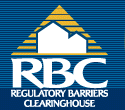Virginia's Efforts to Promote
Affordable Housing
Over the past decade, Virginia has taken several steps to promote affordable housing, but at the same time, has experienced a growth in job opportunities leading to an increased population and higher housing demand. Unfortunately, supply is not keeping up with demand and housing affordability for low- and moderate-income households has become exceedingly important. The median price of a home in Virginia more than doubled from $125,400 in 2000 to $262,100 in 2007. In contrast, median household income has only increased incrementally from $46,667 in 1999 to $59,562 in 2007. As part of our ongoing focus on state roles in promoting affordable housing development, we are taking a look at legislation adopted by the Commonwealth of Virginia to help localities address the issues of housing affordability.
Rehabilitating the Housing Stock
Virginia enables cities, counties, or towns to establish Housing Rehabilitation Zones as a means of increasing housing options for residents. Authorized by Virginia State Code, local communities can provide financial and regulatory incentives to encourage housing rehabilitation in designated areas. The incentives, some of which are mandated for up to 10 years, include reducing permit and user fees, waiving tax liens, adopting special zoning designations, utilizing special permit processes, and allowing exemptions from certain state environmental requirements. The state also authorizes local governments to establish special service districts to improve public infrastructure in these zones.
Incentives to Encourage Affordable Housing Development through
Inclusionary Zoning
In 2007, Virginia's inclusionary zoning law amended legislation authorizing Affordable Dwelling Unit (ADU) ordinances that allow for increased densities in developments that include affordable housing. Prior to this amendment, developments were eligible to receive a 20 percent increase in density when 12.5 percent of the units were set aside for affordable housing. The amended code permits a density bonus of up to 30 percent for residential developments in which 17 percent of the housing units remain affordable. The amended legislation also allows localities to establish a housing trust fund to promote affordable housing goals within the community. Local governments may also adopt other incentives, such as reducing or waiving various permit fees and expediting approval processes, as part of an overarching ADU ordinance.
Higher-Density Housing in Urban Development Areas
Virginia adopted another key piece of legislation in 2007, directed towards promoting higher densities in areas within close proximity to transportation facilities that also have access to public water and sewer systems. The legislation requires communities to create Urban Development Areas (UDAs), which can accommodate projected growth for 10 to 20 years in the future. The UDAs are to be implemented as part of a community’s comprehensive plan in all localities with a population of at least 20,000 and a 5 percent projected growth rate. Communities under 20,000 are also required to adopt one or more UDAs if the projected population growth exceeds 15 percent. The UDAs would allow for a minimum density of four units per acre for residential developments and minimum floor area ratio of 0.4 per acre for commercial developments. The state also encourages incorporation of traditional neighborhood development and new urbanism principles, such as pedestrian-friendly design standards, reduced setbacks, and mixed uses for the UDAs. In March of this year, the state senate passed a bill (SB 1487) amending the UDA requirements to allow for a broad range of housing types, including affordable housing within these areas.
Conclusion
In recognizing the growing need for affordability, Virginia has adopted legislation that promotes housing development to support the needs of low- and moderate-income residents. The financial and regulatory incentives authorized through state legislation allow local governments to increase affordable housing options by promoting the rehabilitation of older housing stock and encouraging new developments at higher densities.
Previous Article Next Article Search Archives
|


